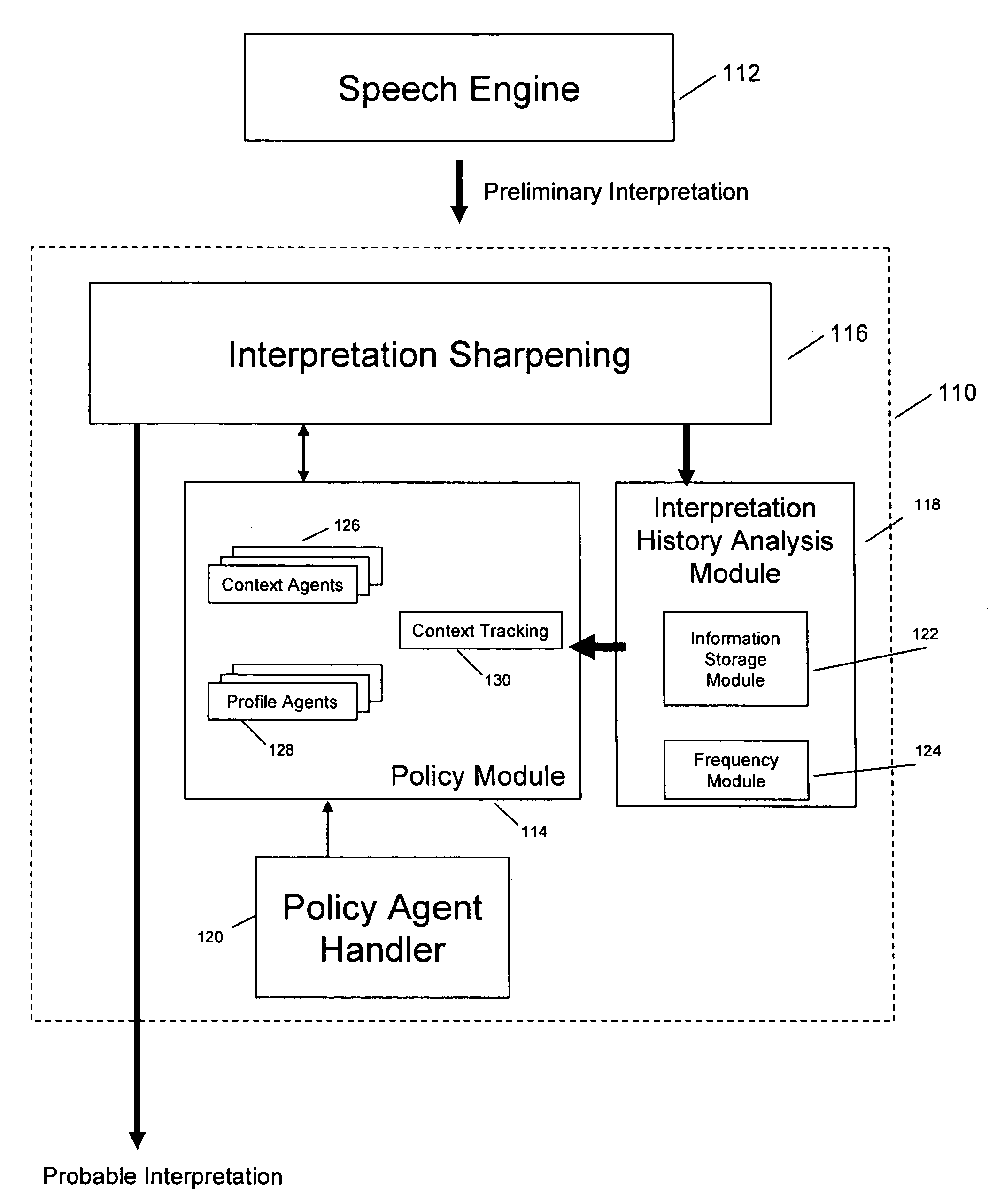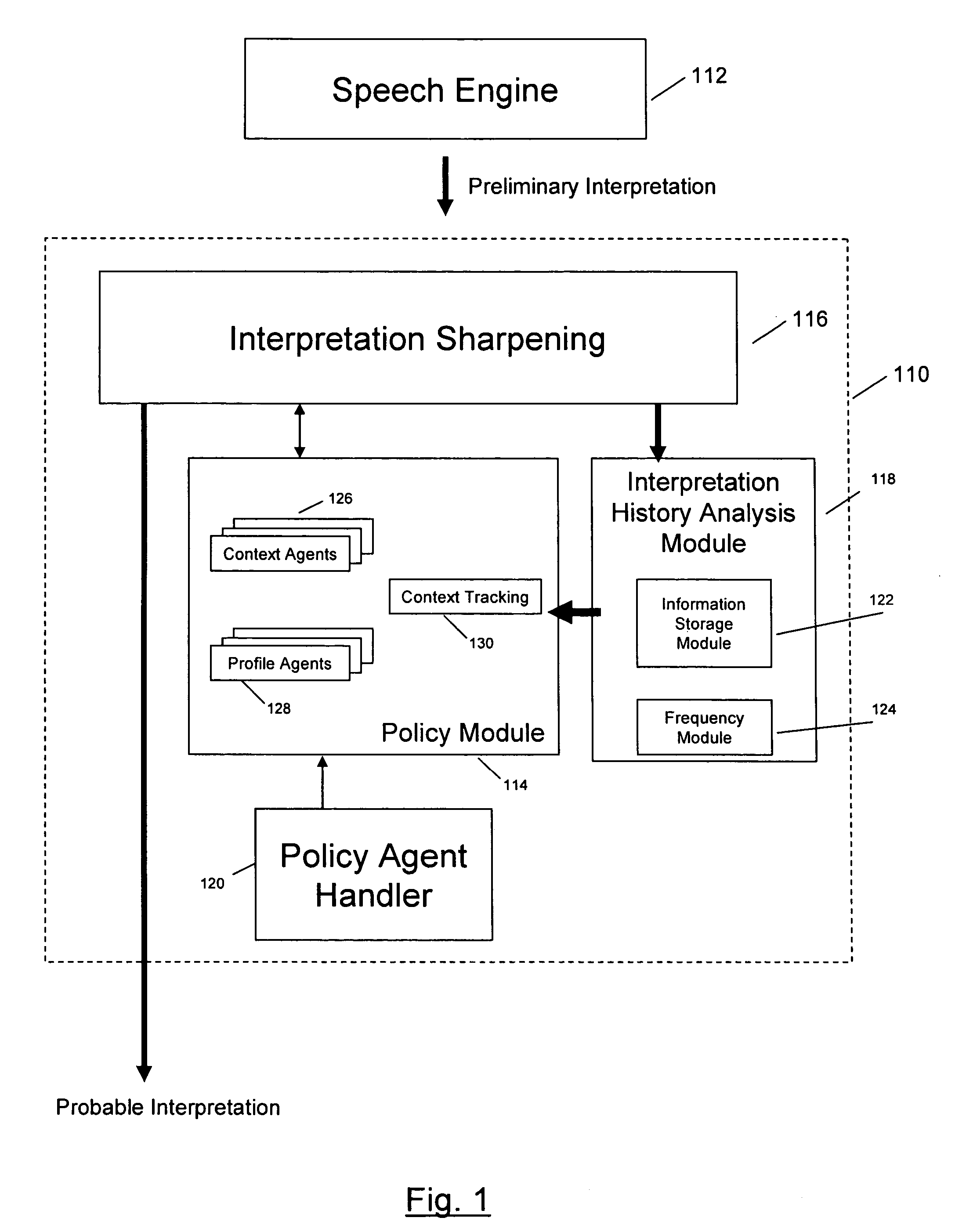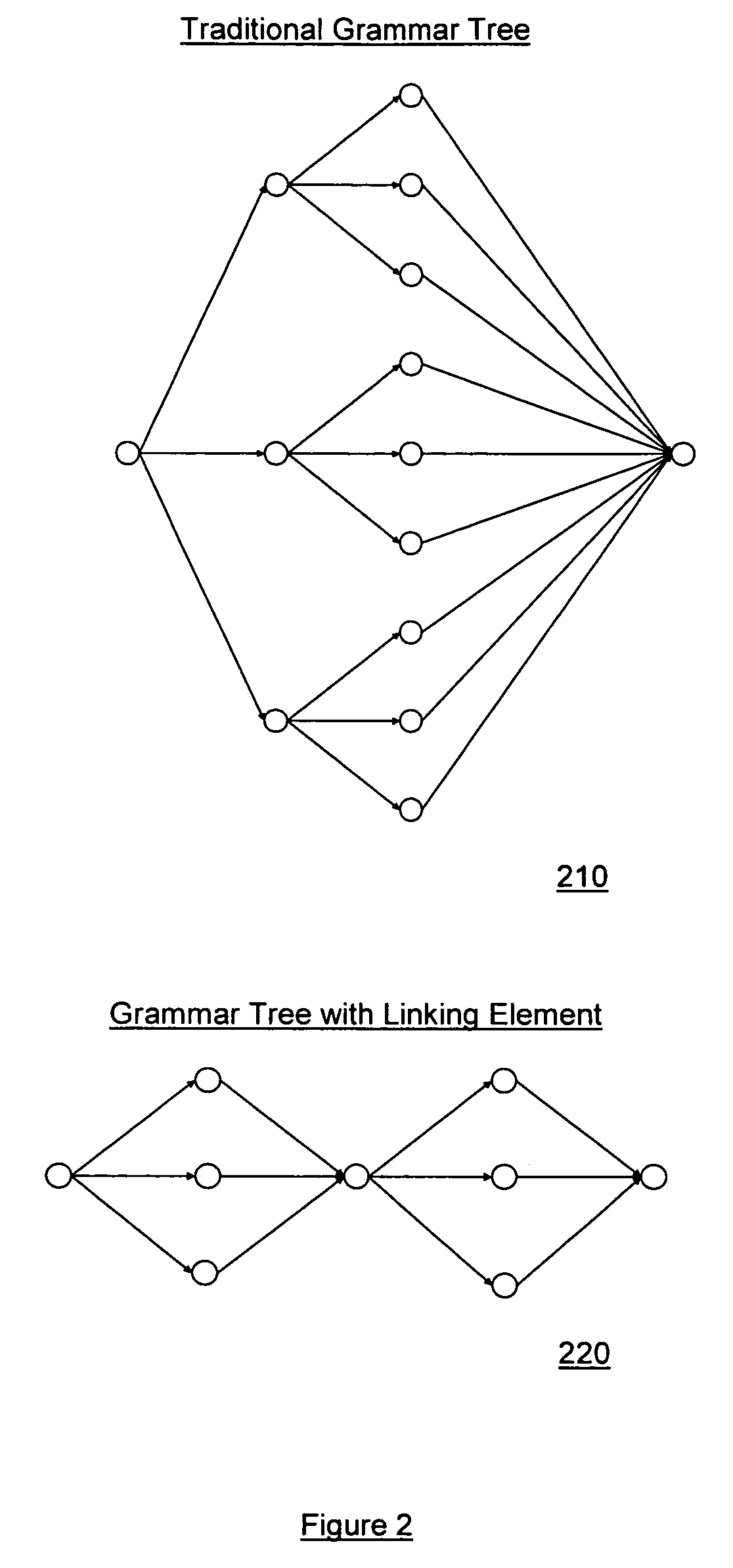Dynamic speech sharpening
a speech sharpening and dynamic technology, applied in the field of automatic speech interpretation, can solve the problems of not being able to fit within the confines of embedded applications, unable to process speech signals in an efficient manner, and other systems for interpreting speech, so as to enhance automatic speech interpretation, enhance accuracy and performance, and reduce the search space of speech engines
- Summary
- Abstract
- Description
- Claims
- Application Information
AI Technical Summary
Benefits of technology
Problems solved by technology
Method used
Image
Examples
Embodiment Construction
[0023]FIG. 1 illustrates an exemplary system for enhancing automated speech interpretation according to one implementation of the invention. A speech-to-text processing engine 112 may receive a user verbalization, and speech engine 112 may generate one or more preliminary interpretations of the user verbalization. The preliminary interpretations may represent a set of best guesses as to the user verbalization arranged in any predetermined form or data structure, such as an array, a matrix, or other forms. In one implementation of the invention, speech engine 112 may generate the preliminary interpretations by performing phonetic dictation to recognize a stream of phonemes, instead of a stream of words. Phonemic recognition provides several benefits, particularly in the embedded space, such as offering out-of-vocabulary (OOV) capabilities, improving processing performance by reducing the size of a grammar, and eliminating the need to train Statistic Language Models (SLMs). Those skil...
PUM
 Login to View More
Login to View More Abstract
Description
Claims
Application Information
 Login to View More
Login to View More - R&D
- Intellectual Property
- Life Sciences
- Materials
- Tech Scout
- Unparalleled Data Quality
- Higher Quality Content
- 60% Fewer Hallucinations
Browse by: Latest US Patents, China's latest patents, Technical Efficacy Thesaurus, Application Domain, Technology Topic, Popular Technical Reports.
© 2025 PatSnap. All rights reserved.Legal|Privacy policy|Modern Slavery Act Transparency Statement|Sitemap|About US| Contact US: help@patsnap.com



